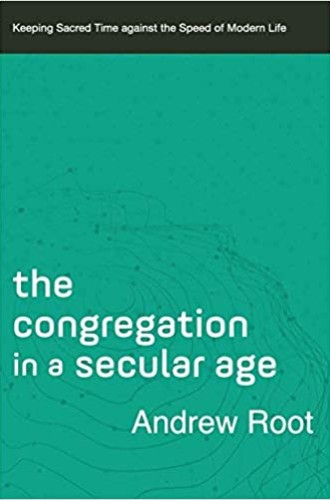Church leaders today often find themselves caught in the busy church trap. People are attracted to churches they describe as busy, active, or making a difference. Such people express interest in a wide variety of programs or initiatives. But when church leaders respond by rolling out new ministries, they find that people are too busy or too exhausted to get involved.
In this third volume in his Ministry in a Secular Age series, Andrew Root does a terrific job of examining the busy church dilemma and helping church leaders understand why doing what we have always done—in short, more—may not be the answer.
Root ranges wide in this volume, writing in dialogue with several key thinkers, including philosopher Charles Taylor and social theorist Hartmut Rosa. Drawing particularly from Rosa, Root helps us understand how and why “modernity is the constant process of speeding things up.”





